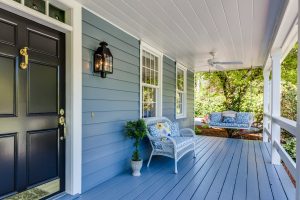Biomimetic Architecture: Nature-Inspired Residential Design Strategies
If you take a moment to look around, you will notice that nature has always been the greatest source of inspiration for mankind. From art and literature to technology and architecture, nature has been the muse for countless human creations. One such remarkable example is the emerging trend of biomimetic architecture, where nature-inspired design strategies are applied to create sustainable and efficient residential spaces. In this article, we will dive into the world of biomimetic architecture and explore the fascinating ways in which nature is transforming the way we design and build our homes.
The concept of biomimetic architecture
Biomimetic architecture, also known as biomimicry, is a design approach that takes inspiration from nature’s strategies, patterns, and processes to create sustainable and innovative solutions to human problems. It is a holistic approach that goes beyond replicating the physical appearance of nature and instead, tries to emulate its functionalities and behaviors. The term “biomimicry” was coined by Janine Benyus in her book “Biomimicry: Innovation Inspired by Nature”, where she examines how nature has solved complex problems through adaptation and evolved designs over millions of years.
The idea behind biomimetic architecture is to learn from nature’s 3.8 billion years of research and development and apply those learnings to our built environment. By mimicking nature, we can create structures that are not only aesthetically pleasing but also sustainable, energy-efficient, and resilient to changing environments.
Nature-inspired design strategies
Biomorphic shapes
One of the most apparent ways in which biomimicry has influenced residential design is through the use of biomorphic shapes. Many modern buildings are now designed with curves and flowing lines, inspired by the organic forms of plants and animals. These shapes not only add visual interest to the building but also help with energy efficiency, as they reduce wind resistance and allow for better air circulation.
Bioclimatic design
Nature has perfected the art of climate control, and biomimicry aims to do the same in architecture. Bioclimatic design is all about creating buildings that regulate their internal temperature and lighting, just like how a termite mound maintains a constant temperature for its inhabitants. This is achieved through the strategic placement of windows, shading devices, and insulation materials, reducing the need for artificial heating and cooling systems and ultimately, promoting energy efficiency.
Biomaterials
Much like nature’s structures, biomimetic architecture also relies on natural and sustainable materials. Architects and designers are now exploring innovative ways to use biomaterials such as bamboo, hemp, and mycelium (the thread-like vegetative part of fungi) in construction. These materials not only have a lower carbon footprint but are also biodegradable and can be grown and harvested in a renewable manner.
Benefits of biomimetic architecture in residential design
The advantages of biomimetic architecture in residential design are manifold. Firstly, it promotes sustainability by reducing the need for artificial resources and creating buildings that have a minimal impact on the environment. Secondly, it creates living spaces that are healthier for its inhabitants, with improved air quality and natural lighting. Additionally, biomimetic design can also lead to cost savings in the long run, as energy-efficient homes reduce utility bills.
Beyond these tangible benefits, biomimetic architecture also allows for a more harmonious relationship between humans and nature. By immersing ourselves in natural design elements, we can reconnect with our innate affinity for the environment and develop a deeper understanding and appreciation for it.
Conclusion
Nature has a lot to teach us, and biomimetic architecture is a prime example of how we can learn from it to create a more sustainable and efficient built environment. By incorporating nature-inspired design strategies, we can create residential spaces that not only benefit us but also the world around us. The future of architecture lies in this fusion of art, science, and nature, and it is an exciting prospect to see what innovations lie ahead.











